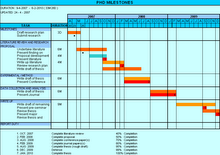SENSOR SYSTEM
- Sensing hardware of sensor or sensor networks collecting information on time varying quantities (waveform). This information is a series of sensor data set (also called scans or data frames) that received at discrete instants of time.
- Via a detector device, the data go through a data rate reduction process and forwarded for signal processing.
- This data set is used to estimate the state of a stochastically driven dynamical system. Therefore the signal processing results in estimates of the waveform parameters and produced the final sensor reports (measured quantities) and become the input of tracking system
TRACKING SYSTEM
- Tracking results from the data association and estimation algorithm techniques (sensor data processing) which used to exploit efficiently the data from sensor resources and also to obtain information that not directly produce by the sensor reports.
- i.e: tracks mean estimate of state trajectories which statistically represent the quantities or object considered along with their temporal history.
- Sensor reports that can be associated to existing tracks are used for track maintenance
- While remaining reports that non-associated to any existing track are used to initiate new track or multiple frame track extraction.(track initiation)
- Both track initiation and track maintenance required a prior knowledge of the sensor performance, object characteristic and object environment. This prior knowledge available in the form of statistical modeling assumptions.
- Plot-to-track unit is important when dealing with multiple target tracking system
- Stored data (in Track File Storage) is extracted during track processing and used for track termination /conformation, object classification/identification, and track to track fusion (fusion of track representing identical information).
- Results are displayed through man-machined interface. Other purpose is for interaction function where available information on sensor, object of interest, and the environment can be specified, updated, or corrected by direct Human interaction or the track processor itself.
- High false return background. Sensor can't compress data
- Ambiguous correlation between new and existing track become a problem for closely-spaced moving object. Plus false return or unwanted object, identity of the individual object tracks might get lost
- Limited sensor resolution capability make the data association harder bcoz the closely-spaced object may continuously change from being resolved to unresolved and back again. Besides, sensor returns having poor quality, low SNR, or fading phenomena. Scan rate maybe low in certain application ex: long-range air surveillance.
- The underlying dynamics models are restricted to one particular sample out of several sets of alternatives. Sudden switches between the underlying dynamics models do occur and tracks can get lost in such critical situation.
- Most mathematical techniques of tracking system essentially make use of Bayes' Rule
- Tracking algorithm is an iterative updating scheme for conditional probability densities that describe the object states given both the accumulated sensor data and all available prior information
- Optimal state estimators may be derived related to various risk function provided that filtering, density iteration, has been done correctly.
- Generalization of standard smoothing algorithms, retrodiction, provides a backwards iteration scheme for calculating the probability densities of the past objects states given all information accumulated up to the current scan.
- Track maintenance and data acquisition are closely related
- exist feedback of tracking information to the sensor system
- Tracking algorithm must be initiated by appropriately chosen prior densities.
- Network of homogeneous or heterogeneous sensors are preferred compare to single sensors
- Networks' advantages:
- Total coverage of suitably distributed sensors are much larger
- Low-cost sensor network
- Redundancy of overlapping fields of view increased data rates and observation under several aspect
- Multiple-sited networks provide that is on principle not available by corresponding single-sited sensor
- More robust against failure or destructive of individual components
- Centralised data fusion: sensor reports are transmitted to a processing centre without significant delay.
- Issue of single-sited sensor or sensor networks is irrelevant.
- Practical realization is difficult bcoz of limited data links between the sensors and the fusion centre, synchronisation problems, or misalignment errors.
- Decentralised fusion architecture or hybrid solution is proposed.
- Data of the sensor system are pre-processed at their individual sites
- Fusion centre receives higher-level information
- i.e: sensor-individual track which are to be fused with other tracks resulting in a central track.
- Real radar data from single-sited radar.
- Data compared using IMM-MHT Retroiction and MMSE-MHT Retrodiction
- IMM-MHT perform better especially in a verysmooth condition (accurate speed and heading information)
- Both filtering and retrodiction produce better results when using model histories more than length n = 1 (delay the frame for MMES-MHT)

No comments:
Post a Comment